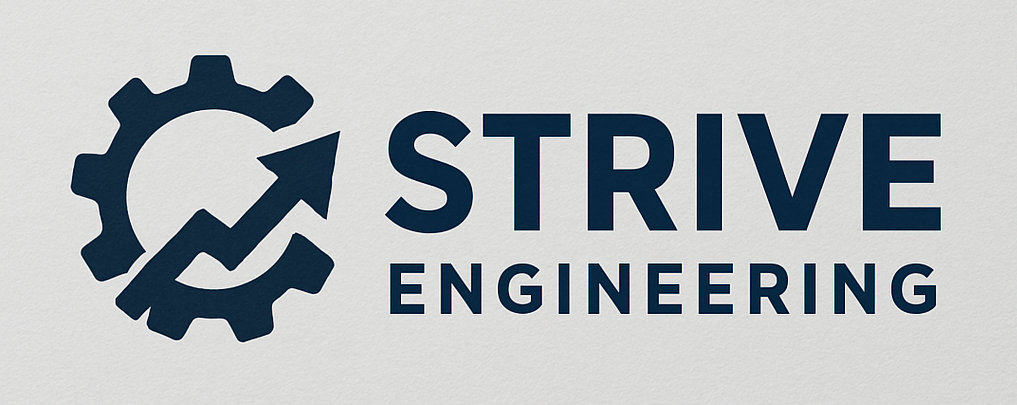Stormwater management is a critical part of any residential or duplex development in Sydney. With councils tightening regulations, On-Site Detention (OSD) systems have become a standard requirement for most new builds. Yet, many builders and homeowners are confused about what OSD entails and why it matters.
At Strive Engineering, we specialise in stormwater and hydraulic design across Sydney. In this article, we break down everything you need to know about OSD from purpose to design, compliance, and practical tips for smooth construction.

What is On-Site Detention (OSD)?
On-Site Detention is a system designed to temporarily store stormwater on-site during heavy rainfall and release it at a controlled rate into the council drainage network. The goal is to reduce the risk of flooding downstream, protect local infrastructure, and comply with council regulations.
Key points:
- OSD does not replace normal stormwater drainage; it works alongside pipes, pits, and drains.
- It is usually required for lots where additional runoff is generated by new hard surfaces like roofs, driveways, and paved areas.
- Councils in Sydney, including Sutherland Shire, Georges River, Camden and Bayside have specific OSD volume and discharge requirements depending on lot size and site slope.
Why OSD Matters
Recent rainfall events across Sydney — with some suburbs receiving over 180mm in 24 hours — have highlighted the importance of effective stormwater management. Without proper OSD:
- Roads can flood, causing public safety issues.
- Nearby properties may experience overland flow and damage.
- Development approvals may be delayed due to non-compliance.
Properly designed OSD ensures that stormwater is managed safely, efficiently, and in accordance with council regulations, protecting both your project and the surrounding community.
Types of OSD Systems
There are several types of OSD solutions commonly used in Sydney residential and duplex developments:
- Detention Tanks – Below-ground or above-ground tanks that store water temporarily.
- Pits with Restricted Outlets – Stormwater pits designed to slow down water release.
- Berms, Swales, and Basins – Shallow landscaped areas that detain water temporarily.
- Combination Systems – Using multiple methods to meet volume and flow restrictions.
The choice depends on:
- Lot size and site constraints
- Soil type and permeability
- Budget considerations
- Aesthetic and landscaping preferences
Design Considerations for Builders and Homeowners
When planning OSD for your project:
- Volume Calculation: Ensure the system can handle the expected runoff from roofs, driveways, and hard surfaces.
- Outlet Control: Councils specify the maximum allowable discharge rate usually in litres per second to prevent downstream flooding.
- Maintenance Access: OSD systems must be accessible for inspection and cleaning.
- Integration with Landscaping: Well-designed OSD can be hidden or incorporated into gardens, driveways, and courtyards.
Strive Engineering makes sure your OSD design is practical, compliant, and buildable avoiding costly redesigns or council delays.
Common Mistakes to Avoid
- Installing an OSD system without accurate site levels or stormwater calculations
- Ignoring council restrictions on discharge points or flow rates
- Choosing a system too small for the lot or roof area
- Poor integration with existing drainage leading to blocked or ineffective OSD
Even minor mistakes can cause major headaches during construction or post-build.
How a Structural Engineer Can Help
Many builders and homeowners underestimate the role of a structural and stormwater engineer in OSD design. Our role includes:
- Calculating exact detention volumes based on site-specific rainfall and runoff
- Designing compliant OSD tanks, pits, or basins
- Coordinating with architects, builders, and councils for approval
- Ensuring the system is buildable and maintainable over time
The right design upfront saves time, avoids council rejections, and reduces long-term maintenance costs.
Final Thought
On-Site Detention is not just a regulatory requirement it’s an essential investment in safety, compliance, and property protection. As Sydney experiences more extreme rainfall events, well designed OSD systems are critical to preventing flood damage and ensuring smooth project delivery.
Our team specialises in stormwater and structural design for residential, duplex, and townhouse developments. We provide practical, compliant, and cost effective solutions tailored to your site.
Contact Us
If you’re planning a residential or duplex development in Sydney and need professional guidance on OSD or stormwater design, contact us today:
📞 0424364267
📧 admin@striveengineering.com.au

Leave a Reply